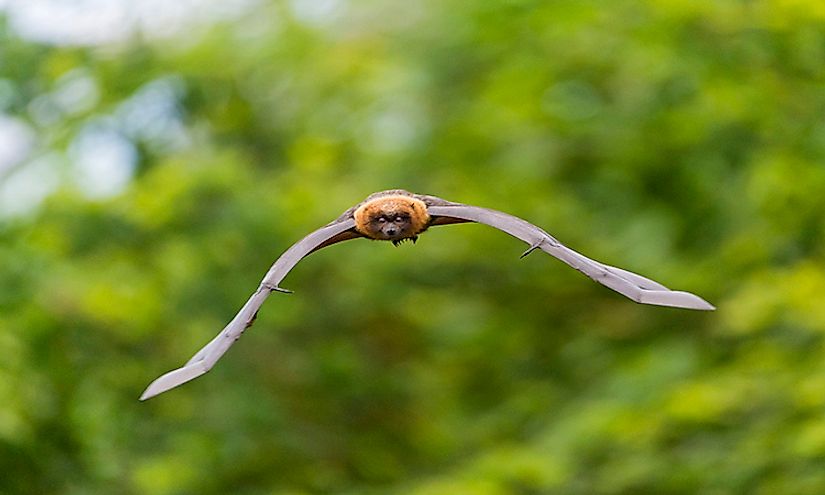Flying And Gliding Mammals From Around The World

8. Petaurus -

Petaurus is a genus of arboreal marsupials including wrist-winged gliders and flying phalangers. The latter are among the flying mammals of the world and are native to New Guinea and Australia. The animals are nocturnal by nature. They do not exactly fly but glide from one tree to another. The flying phalangers have loose folds of skin between their wrists and ankles that help them to jump and glide from one tree to another with limbs spread-eagle. They can cover distances of over 140 meters in this manner.
7. Greater Glider -

The greater glider, a native Australian marsupial, is a nocturnal and solitary herbivore. The animal is found in two forms, the grey-to-white and sooty brown form. These animals live in the eucalypt forests of Queensland, Victoria. Though originally thought to be a class of flying phalangers, it is now classified separately. The greater glider also possesses membranous extensions that help in gliding from one tree to another. However, unlike the flying phalangers, the skin extensions of the greater glider extend from the ankles to the elbows and not the wrists.
6. Colugos -

The colugos are Southeast Asian arboreal gliding mammals belonging to two extant species. The patagium of the colugos is the largest among other species with similar gliding adaptations. These animals can glide across a distance of up to 70 meters with minimal loss of height.
5. Scaly-tailed Flying Squirrels -

Though these creatures have the word squirrels in their common name, they are actually rodents of Africa that have evolved to resemble flying squirrels. Three genera with seven species represent the scaly-tailed flying squirrels. All species with the exception of one have gliding membranes between their hind and front legs.
4. Sifaka -

A type of lemur, the sifaka has limited gliding abilities. These primates possess thick forearm hairs and small membrane under the arms which are both helpful in providing a lift to the sifakas.
3. Feathertail Glider -

Feathertail gliders belong to the Acrobatidae family with two genera having one species each. The animals are found in Australia and have the size of a small mouse.
2. Flying squirrels -

Flying squirrels include fourteen genera and 43 species. These mammals are found in many parts of the world including tropical, temperate and Arctic habitats. These creatures are primarily nocturnal in habit. They possess a cartilage spur on wrist or elbow. When deciding to move from one tree to another that is not at a jumping distance, the squirrels extend the cartilage spur. This opens out the patagium that stretches between the wrist and ankle and helps the squirrel glide to the next tree spread-eagle. The tail of the animal remains fluffed out like a parachute during this flight. It lands on the tree gripping the tree with its claws.
1. Bats -

Definitely, the first mammals that come to our mind when thinking of flying mammals, bats are the only mammals that are capable of sustained and true flights. There are 1,240 species of bats that represent nearly 20% of all mammalian species in the world. Unlike birds, bats flap their spread-out digits instead of the entire forelimbs. The digits are very long, and a thin membrane called patagium covers the digits.











